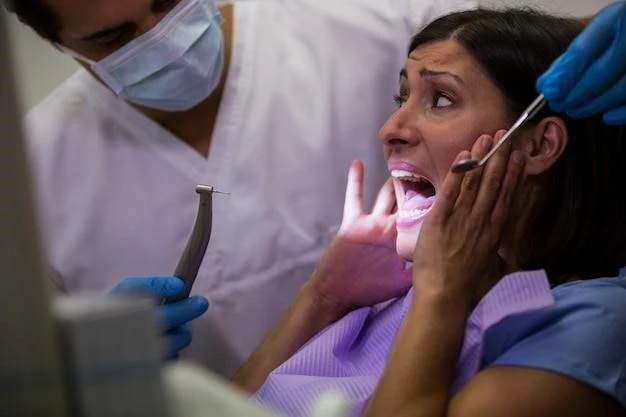Disease ౼ Incisors Fused
Incisors fusion is a dental anomaly where two incisors are joined together. This article explores the causes, types of anomalies, and impacts on dentition. It also covers diagnosis, treatment options, and clinical case studies.

Introduction to Incisors Fusion
Incisors fusion, a dental abnormality, occurs when two adjacent incisors in the mouth are joined together by enamel or dentin, resulting in an abnormal appearance and function. This congenital malformation affects the aesthetics of the smile and can impact oral health. Incisors fusion can be caused by genetic mutations that affect the developmental processes of the teeth during morphogenesis. Understanding the underlying odontogenic anomalies that contribute to incisors fusion is crucial for accurate diagnosis and effective treatment. This condition can occur in both the maxillary and mandibular dentition, leading to various degrees of fusion between the affected teeth. Patients with this hereditary dental anomaly may experience difficulties in chewing, speech, and maintaining proper oral hygiene. Through clinical case studies and research, dental professionals continue to explore innovative treatments and preventive strategies to manage incisors fusion and other dental anomalies successfully. Early detection and intervention play a vital role in addressing incisors fusion and ensuring optimal oral health outcomes for patients.
Causes of Incisors Fusion
Incisors fusion can be attributed to various factors, including genetic mutations affecting the development of dental tissues such as enamel and dentin. Hereditary conditions play a significant role in predisposing individuals to this dental anomaly. Abnormalities in the morphogenesis of teeth during embryonic development can result in the fusion of incisors. Environmental factors and trauma to the oral cavity can also contribute to the occurrence of incisors fusion. Odontogenic anomalies that disrupt the normal growth and differentiation of dental structures may lead to the fusion of adjacent incisors. Understanding the complex interplay of genetic and environmental influences in the etiology of incisors fusion is essential for effective prevention and management strategies. Research into the molecular mechanisms underlying dental abnormalities continues to uncover novel insights into the pathogenesis of conditions such as incisors fusion. By elucidating the causes of this malformation, dental professionals can tailor treatment approaches to address the specific underlying factors contributing to the fusion of incisors.
Types of Dental Anomalies
Dental anomalies encompass a wide range of abnormalities that can affect the structure and appearance of teeth. In addition to incisors fusion, other common odontogenic anomalies include enamel hypoplasia, dentinogenesis imperfecta, and supernumerary teeth. Enamel hypoplasia is characterized by underdeveloped enamel, leading to weakened and discolored teeth. Dentinogenesis imperfecta involves defects in dentin formation, resulting in a translucent and weakened dentition. Supernumerary teeth refer to the presence of extra teeth in the oral cavity, which can cause crowding and alignment issues. These dental anomalies may occur independently or in combination with each other, affecting the aesthetics and function of the dentition. Genetic mutations and environmental factors can predispose individuals to various types of dental anomalies, highlighting the complex nature of odontogenesis and tooth development. By recognizing the different types of dental anomalies, dental professionals can provide accurate diagnoses and tailored treatment plans to address specific abnormalities in the dentition.
Understanding Morphogenesis of Incisors
The morphogenesis of incisors entails a complex process of tooth development that begins during prenatal stages. During embryonic development, interactions between dental epithelium and mesenchyme guide the formation of enamel, dentin, and other dental tissues. Disturbances in these intricate signaling pathways can lead to anomalies such as incisors fusion. The morphogenetic processes involved in incisors development include cell proliferation, differentiation, and migration, all of which must occur in a coordinated manner for proper tooth formation. Genetic mutations affecting key signaling molecules and transcription factors can disrupt the morphogenetic cascade, resulting in structural abnormalities in the incisors. Understanding the morphogenesis of incisors at a molecular level is crucial for elucidating the etiology of dental anomalies and developing targeted interventions. Research into the regulatory mechanisms governing tooth development continues to shed light on the intricate processes that govern incisors morphogenesis. By unraveling the complexities of incisors development, dental professionals can enhance their ability to diagnose and treat conditions such as incisors fusion with precision and efficacy.
Diagnosis of Fused Incisors
Diagnosing fused incisors involves a comprehensive dental examination that includes visual inspection, dental X-rays, and possibly genetic testing. The visible fusion of the incisors is often the primary indicator of this dental anomaly. Dental X-rays can reveal the extent of fusion between the teeth and any underlying structural abnormalities. In some cases, genetic testing may be recommended to assess for hereditary conditions that could contribute to incisors fusion. Additionally, intraoral scans and 3D imaging technologies can provide detailed insights into the fusion pattern and aid in treatment planning. Differential diagnosis is crucial to distinguish incisors fusion from other dental anomalies that may present with similar symptoms. Dental professionals use their expertise and diagnostic tools to accurately identify fused incisors and develop a personalized management approach. Early detection of this condition allows for timely intervention and proactive treatment to address the functional and aesthetic concerns associated with fused incisors.
Treatment Options for Fused Incisors
The treatment of fused incisors depends on the extent of fusion, patient’s age, and any associated dental issues. Conservative approaches may involve reshaping the fused incisors to improve aesthetics and function, especially in cases where the fusion is limited. Orthodontic interventions, such as braces or aligners, may be used to correct alignment issues caused by fused incisors. In more severe cases, surgical separation of the fused teeth followed by restorative procedures like dental crowns or veneers may be necessary to restore the appearance and function of the dentition. Regular monitoring and maintenance are essential to ensure the long-term success of treatment for fused incisors. Dental professionals work closely with patients to determine the most appropriate treatment plan based on individual needs and preferences. Through a multidisciplinary approach that may involve orthodontists, oral surgeons, and prosthodontists, comprehensive care can be provided to address the challenges posed by fused incisors and optimize oral health outcomes.
Impact of Maxillary Fusion vs. Mandibular Fusion
The location of incisors fusion, whether in the maxillary (upper jaw) or mandibular (lower jaw) region, can influence its impact on the dentition and oral function. Maxillary fusion may affect the aesthetics of the smile more prominently, as it is more visible when smiling or speaking. It can also lead to issues with occlusion and speech, depending on the degree of fusion. In contrast, mandibular fusion may impact chewing and bite alignment to a greater extent due to its position in the lower jaw. The location of the fused incisors can determine the complexity of treatment and the functional consequences that need to be addressed. Understanding the unique challenges posed by maxillary and mandibular fusion is essential for tailoring treatment strategies to meet the individual needs of patients with this dental anomaly. Dental professionals consider the location of incisors fusion along with other factors when developing a comprehensive care plan to mitigate the impact of fused incisors on oral health and quality of life.
Clinical Case Studies of Patients with Incisors Fusion
Examining clinical case studies of patients with incisors fusion provides valuable insights into the presentation, diagnosis, and treatment outcomes of this dental anomaly. Case studies offer a glimpse into the varied manifestations of incisors fusion, ranging from mild fusion with minimal functional impact to severe fusion requiring extensive interventions. By analyzing these cases, dental professionals can refine their diagnostic skills and treatment approaches for managing fused incisors effectively. The documentation of patient experiences, treatment protocols, and long-term results in clinical case studies contributes to the collective knowledge base in dentistry. Through the dissemination of real-world examples, case studies serve as educational resources for professionals seeking to enhance their understanding of incisors fusion and its management. Each patient’s journey with fused incisors is unique, highlighting the importance of individualized care and tailored treatment plans to address the specific needs and challenges posed by this dental anomaly.
Prevention and Management of Dental Anomalies
Preventing and managing dental anomalies such as incisors fusion require a multifaceted approach that considers genetic predispositions, oral hygiene practices, and regular dental check-ups. Maintaining good oral health habits, including proper brushing, flossing, and routine dental visits, can help detect and address potential anomalies early. Genetic counseling may be beneficial for individuals with a family history of dental anomalies to assess the risk of inherited conditions like incisors fusion. Early intervention through orthodontic treatments or restorative procedures can help mitigate the impact of dental anomalies on oral function and aesthetics. Dental professionals play a key role in educating patients about the importance of preventive care and monitoring for signs of anomalies. By promoting awareness and providing personalized guidance, dental teams can empower individuals to take proactive steps in preventing and managing dental anomalies like incisors fusion, ultimately supporting long-term oral health and wellness.
Research and Future Directions
Ongoing research in the field of dental anomalies, including incisors fusion, aims to uncover novel insights into the underlying mechanisms and molecular pathways involved in tooth development. By studying the genetic and environmental factors that contribute to anomalies like incisors fusion, researchers seek to identify potential therapeutic targets and preventive strategies. Future directions in this area may involve gene therapy approaches to correct genetic mutations that lead to dental anomalies. Advanced imaging technologies and biomarker identification could enhance early detection and personalized treatment planning for patients with fused incisors. Collaborative efforts between researchers, clinicians, and geneticists pave the way for innovative solutions in the diagnosis and management of dental anomalies. By fostering interdisciplinary collaborations and leveraging cutting-edge technologies, the future holds great promise for improving outcomes in individuals affected by incisors fusion and other complex dental conditions.
